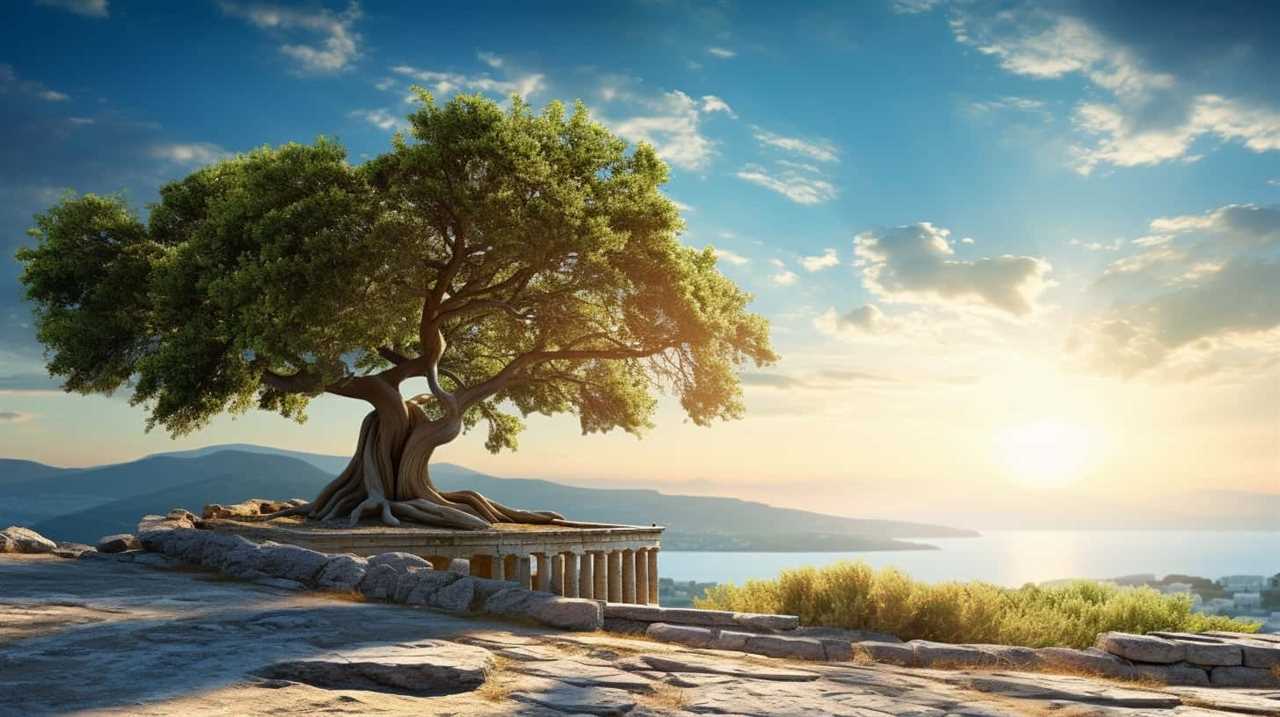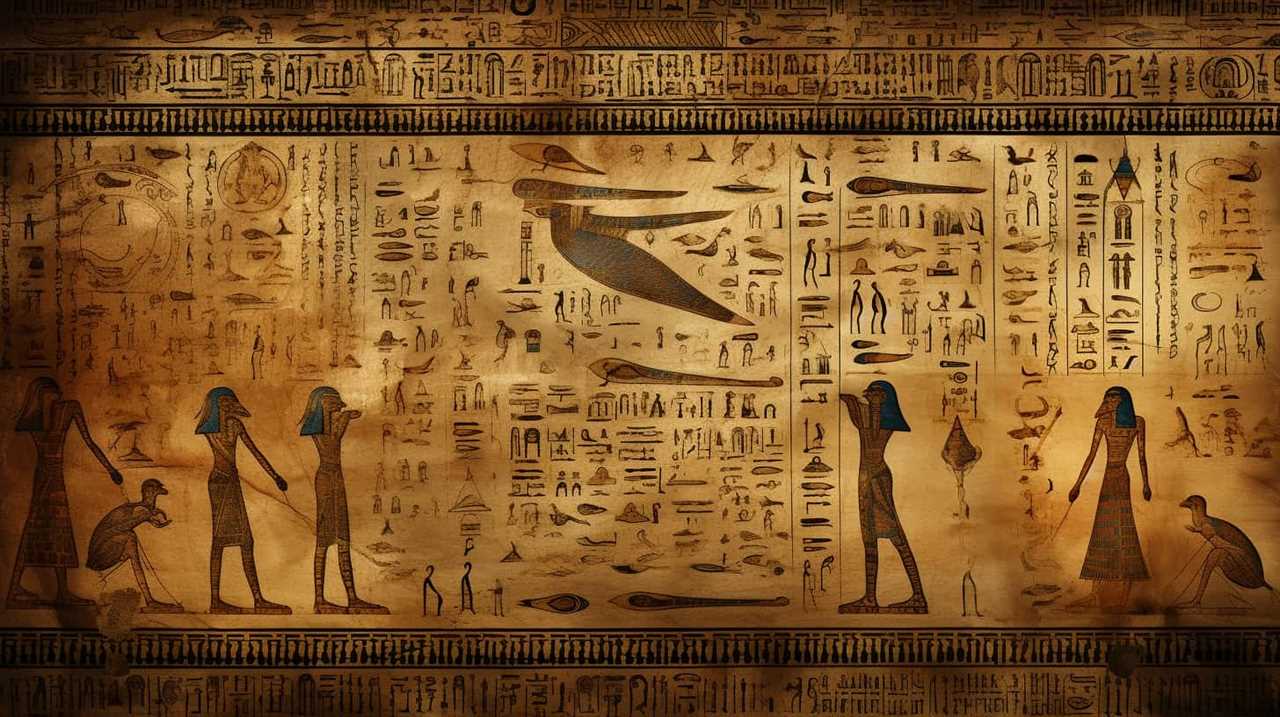Delving into the realm of ancient wisdom, we are captivated by the enduring influence of Eastern proverbs that remain powerful in contemporary times. These timeless expressions offer valuable insights into the complexities of human existence, guiding us towards a deeper understanding of ourselves and the world around us.
With their succinct yet profound messages, these proverbs serve as beacons of enlightenment, illuminating our paths toward personal growth and fulfillment. Rooted in the rich cultural heritage of the East, these age-old sayings continue to captivate and inspire, transcending time and space.
In this exploration of ancient Eastern proverbs, we embark on a journey of self-discovery, uncovering the profound wisdom that continues to shape our lives in the present moment.
Key Takeaways
- Eastern proverbs have deep cultural significance and offer valuable insights into human nature and morality.
- These proverbs provide practical teachings and lessons for personal growth and navigating the complexities of modern life.
- Eastern proverbs have timeless relevance and enduring impact, inspiring us to become the best version of ourselves and promoting inner peace and harmony.
- Proverbs offer profound insights into psychology and cultural values, fostering critical thinking, self-reflection, and holistic learning.
The Wisdom of Ancient Eastern Proverbs
The wisdom of ancient Eastern proverbs continues to inspire and guide us in our modern lives. With their deep-rooted cultural significance and timeless relevance, these proverbs have shaped generations and continue to do so today. The influence of wisdom’s teachings can be seen in various aspects of our lives, from personal growth and relationships to leadership and decision-making.

Eastern proverbs offer practical teachings that resonate with people seeking mastery in their respective fields. These teachings provide valuable insights into human nature, morality, and the pursuit of a meaningful life. For example, the proverb ‘A journey of a thousand miles begins with a single step’ reminds us of the importance of taking small, consistent actions towards our goals. It emphasizes the power of perseverance and reminds us that even the longest and most daunting journeys start with a simple, decisive action.
Another example is the proverb ‘The best time to plant a tree was twenty years ago. The second best time is now.’ This proverb encourages us to take responsibility for our actions and not dwell on past regrets. It reminds us that it’s never too late to start something new or make a positive change in our lives.
The practical teachings of Eastern proverbs offer valuable lessons that transcend time and culture. They provide us with guidance and insights that are just as relevant today as they were centuries ago. As we delve deeper into the timeless relevance of Eastern proverbs, we’ll discover how their wisdom continues to shape our lives and inspire us to become the best version of ourselves.
The Timeless Relevance of Eastern Proverbs
When we consider the enduring impact of ancient Eastern proverbs, we’re reminded of the depth and richness of cultural wisdom that has been passed down through generations.

These proverbs encapsulate timeless truths and offer valuable lessons for modern living.
Their relevance lies in their ability to address universal experiences and challenges, providing guidance and insight that transcends time and place.
Cultural Wisdom’s Enduring Impact
Why do ancient Eastern proverbs continue to resonate with us today? The enduring impact of cultural wisdom lies in its ability to transcend time and connect generations. These proverbs are not just mere sayings; they are the embodiment of centuries-old cultural traditions and intergenerational knowledge. They offer valuable insights into the human experience, providing guidance and wisdom that remain relevant in our modern lives.
To illustrate the significance of Eastern proverbs, consider the following table:
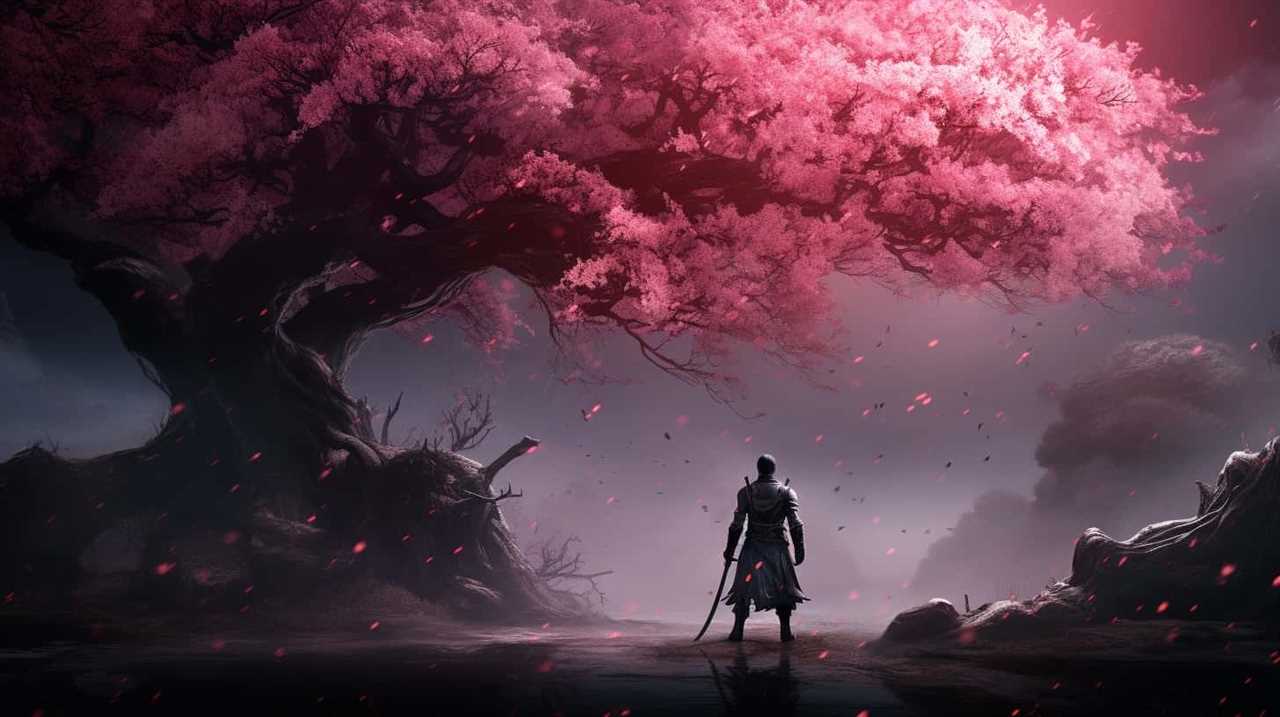
| Proverb | Translation | Meaning |
|---|---|---|
| "Fall seven times, stand up eight." | 七転び八起き (Nanakorobi yaoki) | Perseverance is key; never give up. |
| "A journey of a thousand miles begins with a single step." | 千里の道も一歩から (Senri no michi mo ippo kara) | Every big achievement starts with a small step. |
| "When the winds of change blow, some people build walls and others build windmills." | 風向きが変わると、壁を作る人もいれば、風車を作る人もいる (Kazamuki ga kawaru to, kabe o tsukuru hito mo ireba, kazaguruma o tsukuru hito mo iru) | Adaptation is key to thrive in changing circumstances. |
These proverbs offer timeless wisdom that can be applied to various aspects of our lives. They teach us important lessons about resilience, starting small, and embracing change. By understanding and reflecting on these cultural treasures, we can gain valuable insights for modern living.
Transitioning into the subsequent section about ‘lessons for modern living’, let us explore how these ancient proverbs provide practical guidance for navigating our complex world.
Lessons for Modern Living
As we delve into the topic of ‘Lessons for Modern Living (The Timeless Relevance of Eastern Proverbs)’, we discover valuable insights that can guide us in navigating our complex world.
Eastern proverbs offer a wealth of wisdom that transcends time and culture, providing us with practical guidance for our everyday lives. These ancient sayings encapsulate life lessons that are as relevant today as they were centuries ago.

In a fast-paced and ever-changing world, we often find ourselves seeking clarity and direction. Eastern proverbs offer just that, serving as compasses to help us navigate the complexities of modern life. Whether it’s reminding us to stay humble, encouraging us to persevere in the face of adversity, or emphasizing the importance of patience and self-reflection, these proverbs provide us with a roadmap for personal growth and fulfillment.
By incorporating the lessons from Eastern proverbs into our lives, we gain valuable insights that can help us thrive in today’s society. They remind us of the importance of balance, the power of mindfulness, and the significance of our actions. These proverbs offer practical guidance for handling relationships, making decisions, and finding inner peace.
In the subsequent section, we’ll explore specific ancient proverbs that continue to hold valuable lessons for modern life.
Ancient Proverbs: Lessons for Modern Life
Although ancient Eastern proverbs were written centuries ago, they continue to offer valuable lessons for modern life. These ancient wisdoms have stood the test of time and resonate with us today because they tap into the fundamental truths of the human experience. Let us explore some of these timeless lessons through the lens of ancient Eastern proverbs.
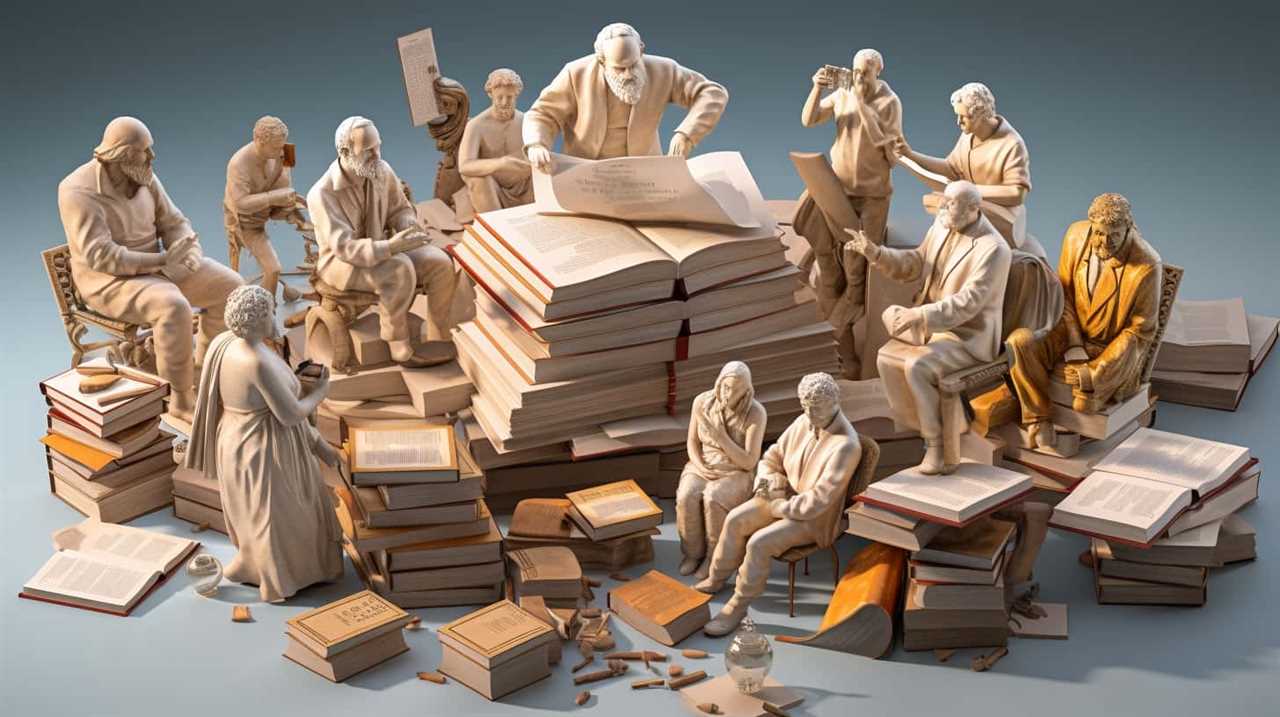
| Ancient Proverb | Lesson for Today |
|---|---|
| "A journey of a thousand miles begins with a single step." | Sometimes, the biggest challenges can be overcome by taking small, manageable steps. In our fast-paced world, it’s easy to get overwhelmed by the magnitude of our goals. This proverb reminds us to break them down into smaller, more achievable tasks. |
| "Patience is bitter, but its fruit is sweet." | In a world of instant gratification, patience is a virtue that is often overlooked. This proverb reminds us that good things come to those who wait. It teaches us the value of delayed gratification and the rewards that come with perseverance. |
| "The best time to plant a tree was 20 years ago. The second best time is now." | This proverb encourages us to take action and seize the present moment. It reminds us that it’s never too late to start something new or make a positive change in our lives. It teaches us the importance of not dwelling on the past and instead focusing on the opportunities that lie ahead. |
| "A wise man learns more from his enemies than a fool from his friends." | This proverb emphasizes the importance of embracing constructive criticism and learning from our adversaries. It reminds us that our enemies can be our greatest teachers, as they challenge us to grow and improve. It teaches us the value of humility and the power of turning adversity into opportunity. |
Ancient Eastern proverbs offer us valuable lessons for today by tapping into the timeless wisdom of our ancestors. These lessons remind us of the fundamental truths of the human experience and provide guidance for navigating the complexities of modern life. By embracing these ancient wisdoms, we can gain a deeper understanding of ourselves and the world around us, and ultimately live more fulfilling and meaningful lives.
Uncovering the Hidden Wisdom of Eastern Proverbs
As we explore the subtopic of ‘Uncovering the Hidden Wisdom of Eastern Proverbs,’ we begin to unravel the timeless wisdom encapsulated within these ancient sayings. These proverbs hold immense cultural significance and continue to resonate today, offering valuable lessons for modern living.
Timeless Wisdom of Proverbs
We uncover the hidden wisdom of ancient Eastern proverbs, revealing their timeless principles and ancient teachings that continue to resonate today. These proverbs, with their concise and profound messages, offer guidance and insight into the complexities of life. They encapsulate the wisdom of generations past and provide a roadmap for navigating the challenges of the present.
Cultural Significance and Relevance
Through our exploration of ancient Eastern proverbs, we’ve discovered the cultural significance and enduring relevance that lies within their hidden wisdom. These proverbs have served as a means of cultural preservation, allowing generations to pass down valuable insights and life lessons.

The intergenerational wisdom transfer that occurs through the sharing of these proverbs ensures that the values and traditions of Eastern cultures aren’t lost over time. The proverbs act as vessels of knowledge, conveying the experiences and teachings of previous generations to guide and inspire present and future ones.
By studying and internalizing these proverbs, we gain a deeper understanding of Eastern cultures and their rich heritage. Moreover, we can apply the wisdom contained within these proverbs to our own lives, drawing lessons from the past to navigate the complexities of modern living.
Transitioning into the subsequent section, let’s now explore the practical lessons that ancient Eastern proverbs offer for our contemporary world.
Lessons for Modern Living
Continuing our exploration of ancient Eastern proverbs, let’s delve into the practical lessons they offer for modern living, uncovering the hidden wisdom that still resonates today. These timeless teachings provide valuable insights for self-improvement and offer guidance on how to apply ancient wisdom in our daily lives.

Here are three key lessons we can learn:
- Cultivate mindfulness: Eastern proverbs emphasize the importance of being present in the moment and cultivating awareness. By practicing mindfulness, we can develop a deeper understanding of ourselves and the world around us, leading to greater clarity and inner peace.
- Embrace simplicity: In a world filled with distractions and complexity, Eastern proverbs encourage us to embrace simplicity. By simplifying our lives and focusing on what truly matters, we can reduce stress and find joy in the simple pleasures.
- Practice patience and perseverance: Ancient Eastern wisdom teaches us the value of patience and perseverance in achieving our goals. By cultivating these qualities, we can overcome obstacles, navigate challenges, and ultimately achieve success.
The Enduring Impact of Ancient Eastern Proverbs
One can’t underestimate the lasting influence of ancient Eastern proverbs. These wise sayings have stood the test of time and continue to resonate with people across different cultures and generations. The enduring cultural wisdom contained within these proverbs offers valuable lessons from the past that are still relevant and applicable in our modern lives.
Ancient Eastern proverbs provide us with insights into the human condition, offering guidance on how to navigate the complexities of life. They touch on various aspects of human experience, including relationships, personal growth, and ethical conduct. By distilling complex ideas into succinct and memorable phrases, these proverbs have the power to inspire and guide us in our daily lives.
Moreover, these proverbs offer a unique perspective on the world, one that’s deeply rooted in Eastern philosophy and spirituality. They encourage us to cultivate qualities such as patience, humility, and mindfulness, reminding us of the importance of inner peace and harmony. In a fast-paced and often chaotic world, these proverbs serve as a gentle reminder to slow down, reflect, and find meaning in our actions.

The enduring impact of ancient Eastern proverbs lies in their ability to transcend time and cultural boundaries, offering universal truths that resonate with people from all walks of life. They provide us with a roadmap for living a meaningful and fulfilling life, reminding us of the wisdom that can be found in the past. By embracing these ancient teachings, we can tap into a wellspring of knowledge and insight that has the power to transform our lives.
Exploring the Cultural Significance of Eastern Proverbs
When it comes to ancient Eastern proverbs, we find timeless wisdom encapsulated in concise phrases that have been passed down through generations. These proverbs have a cross-cultural relevance that transcends time and place, offering valuable insights into the human experience.
In today’s modern society, the cultural significance of these proverbs lies in their ability to provide guidance, inspire reflection, and foster a deeper understanding of ourselves and others.
Timeless Wisdom in Proverbs
As we delve into the cultural significance of Eastern proverbs, we uncover a wealth of timeless wisdom that continues to resonate with us today. These proverbs, passed down through generations, offer timeless teachings that reflect the values and beliefs of their respective cultures. They serve as a window into the rich tapestry of cultural traditions, providing insights into the ways of life, moral codes, and societal norms of ancient Eastern societies.

These proverbs offer practical advice on various aspects of life, such as relationships, personal growth, and decision-making. They encapsulate the collective wisdom and experiences of past generations, serving as a guide for navigating the complexities of life. Eastern proverbs often use metaphors and vivid imagery to convey profound truths, allowing for deeper reflection and understanding.
Cross-Cultural Relevance of Proverbs
Delving into the cultural significance of Eastern proverbs, we find that they transcend cultural boundaries and offer valuable insights into the human experience. These ancient sayings carry a wealth of wisdom that can be applied to various aspects of life, making them relevant not only in Eastern cultures but also in cross-cultural communication.
Eastern proverbs often reflect traditional values, such as respect for elders, humility, and the importance of community. These values aren’t limited to a specific culture but resonate with people from different backgrounds.
Through their universal themes and timeless wisdom, Eastern proverbs provide a bridge for understanding and connecting with others across cultures. They serve as a reminder of our shared humanity and offer guidance in navigating the complexities of life.
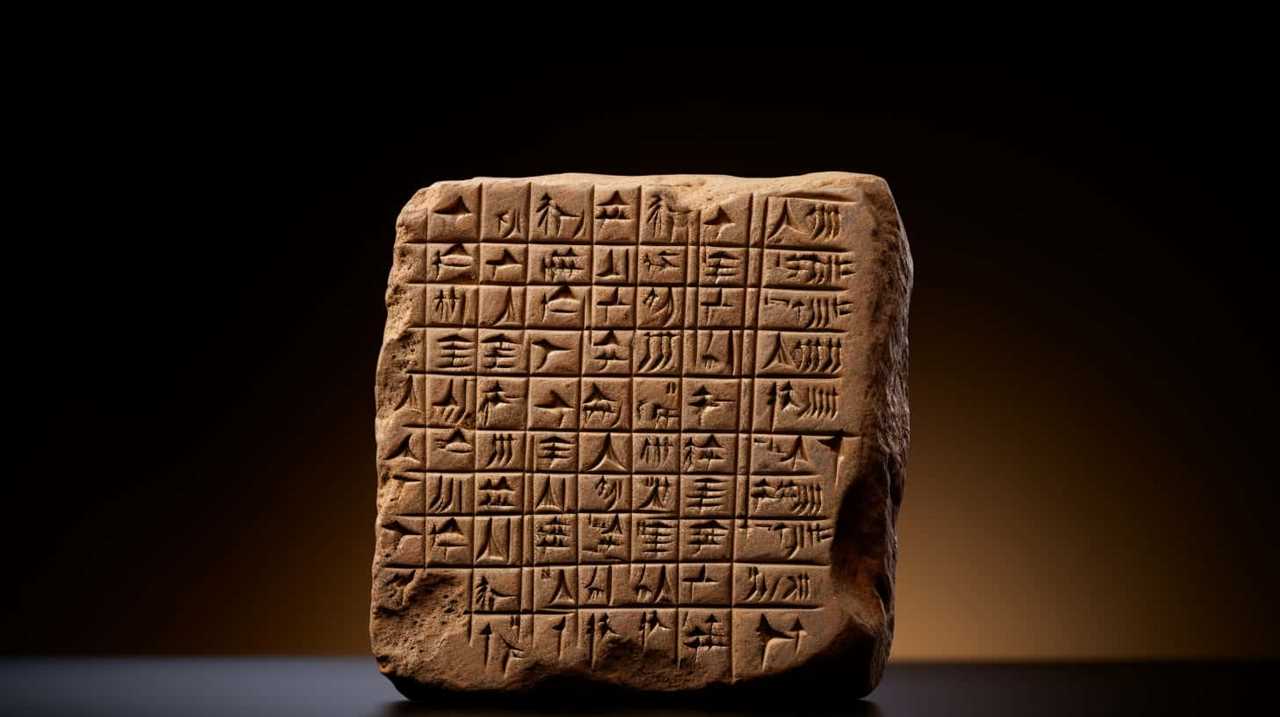
Impact on Modern Society
Eastern proverbs continue to resonate in modern society, shaping our collective understanding and influencing our daily interactions. These ancient nuggets of wisdom have stood the test of time, transcending cultural boundaries and finding relevance in our rapidly changing world. Their cultural adaptation allows them to seamlessly integrate into different societies, offering valuable insights and guidance to individuals of diverse backgrounds.
Eastern proverbs also represent generational wisdom, passed down through the ages, carrying the accumulated knowledge and experiences of countless ancestors. They serve as a reminder of our shared humanity, connecting us to the past and offering guidance for the present. In a world where information is abundant but wisdom is scarce, these proverbs provide a compass, guiding us towards a more balanced and fulfilling life. They remind us of the universality of human experiences and the timeless truths that underpin our existence.
Eastern Proverbs: Insights Into Human Nature
We frequently find that ancient Eastern proverbs offer valuable insights into the depths of human nature. These proverbs provide us with profound insights into psychology and help us understand cultural values. They delve into the complexities of human emotions, motivations, and behaviors, shedding light on universal truths that have stood the test of time.
One such proverb is ‘The journey of a thousand miles begins with a single step.’ This simple yet profound statement encapsulates the human experience of embarking on a daunting task or pursuing a long-term goal. It reminds us that even the most challenging endeavors start with small, manageable actions. This proverb speaks to our innate desire for progress and our need to overcome inertia and fear.

Another proverb that offers insights into human nature is ‘A wise man learns more from his enemies than a fool from his friends.’ This proverb highlights the importance of humility and open-mindedness. It suggests that we can often learn valuable lessons from those who oppose us or have different perspectives. It reminds us that growth and wisdom come from embracing diverse viewpoints and considering alternative opinions.
These ancient Eastern proverbs provide a window into the intricacies of human nature and offer timeless wisdom that transcends cultural boundaries. They prompt us to reflect on our own behaviors, motivations, and beliefs, encouraging personal growth and self-awareness. By understanding and internalizing these insights, we can unlock the secrets of ancient Eastern proverbs and apply them to our own lives, fostering personal development and cultivating a deeper understanding of the human experience.
Unlocking the Secrets of Ancient Eastern Proverbs
As we explore the profound wisdom embedded in ancient Eastern proverbs, we can unlock a treasure trove of timeless insights into the human experience. These proverbs have been passed down through generations, originating from various cultural and philosophical traditions in the East. To truly understand their depth, it’s essential to delve into their origins and engage in contextual interpretation.
- Origins: By tracing the roots of ancient Eastern proverbs, we can gain a deeper understanding of the cultural, historical, and philosophical contexts in which they were born. This exploration allows us to appreciate the rich tapestry of ideas and beliefs that shaped these proverbs.
- Contextual Interpretation: Each proverb carries a wealth of meaning that can only be fully grasped by considering the specific circumstances and cultural nuances in which it was formed. By examining the language, symbolism, and historical context surrounding these proverbs, we can uncover layers of wisdom that may have been lost over time.
- Revealing Universal Truths: Despite their ancient origins, Eastern proverbs continue to resonate with people from diverse backgrounds and cultures. The universal appeal lies in their ability to distill complex ideas and experiences into concise and relatable messages. These proverbs offer timeless insights into the human condition, providing guidance, comfort, and inspiration in navigating the challenges of life.
The Universal Appeal of Eastern Proverbs
Delving into the origins and contextual interpretation of ancient Eastern proverbs, we uncover layers of wisdom that continue to resonate with people across time and cultures. These proverbs have a universal appeal that transcends geographic boundaries and cultural differences. The enduring impact of Eastern proverbs lies in their ability to capture fundamental truths about human nature and the world we inhabit.
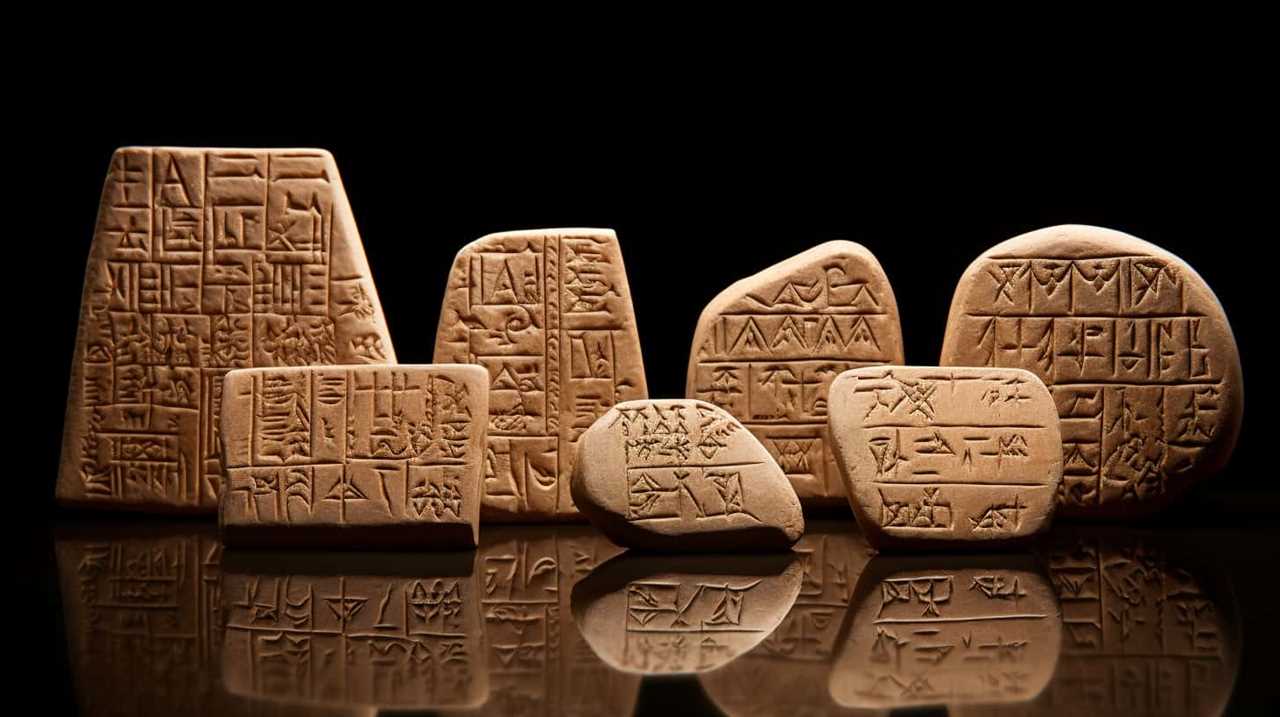
One reason for the universal appeal of Eastern proverbs is their ability to distill complex ideas into concise and memorable phrases. These proverbs often use vivid imagery and metaphor to convey profound insights. For example, the Chinese proverb ‘A journey of a thousand miles begins with a single step’ encapsulates the idea that even the most daunting tasks can be accomplished by taking small, incremental actions.
Furthermore, Eastern proverbs often address timeless themes such as love, friendship, and the pursuit of happiness. These are universal experiences that resonate with people from all walks of life. The wisdom contained within these proverbs speaks to our shared humanity, reminding us of the values and aspirations that unite us as human beings.
In addition, Eastern proverbs often offer practical advice for navigating the challenges of life. Whether it’s the Japanese proverb ‘Fall seven times, stand up eight’ or the Indian proverb ‘The best time to plant a tree was 20 years ago. The second best time is now,’ these proverbs provide guidance and encouragement in the face of adversity. Their enduring impact lies in their ability to inspire and motivate us to persevere in the face of challenges.
The Influence of Ancient Eastern Proverbs Today
From our perspective, the influence of ancient Eastern proverbs remains prevalent in our lives today. These influential teachings continue to shape our thoughts, actions, and interactions, offering valuable insights into the human experience. Here are three key ways in which ancient Eastern proverbs continue to impact our modern interpretation:

- Guidance in Decision-Making: Ancient Eastern proverbs provide us with timeless wisdom that can help us navigate the complexities of life. Their teachings on patience, perseverance, and humility remind us to approach challenges with a calm and balanced mindset, enabling us to make better decisions in various aspects of our lives.
- Cultivating Inner Peace: Many ancient Eastern proverbs emphasize the importance of self-reflection and mindfulness. By incorporating these teachings into our daily lives, we can cultivate a sense of inner peace and tranquility. These proverbs encourage us to live in the present moment, let go of negativity, and find balance amidst the chaos of modern life.
- Promoting Harmonious Relationships: Ancient Eastern proverbs also offer valuable insights into fostering harmonious relationships with others. They emphasize the importance of empathy, compassion, and understanding. By embodying these teachings, we can build stronger connections, resolve conflicts peacefully, and create a more harmonious society.
Eastern Proverbs: Nuggets of Wisdom for All Ages
Our understanding of ancient Eastern proverbs deepens when we explore the timeless wisdom they offer people of all ages. These proverbs, often referred to as "nuggets of wisdom," contain ageless teachings that continue to resonate with individuals seeking guidance and enlightenment.
| Eastern Proverbs | Interpretation |
|---|---|
| "A journey of a thousand miles begins with a single step." | This proverb encourages individuals to take action and start their journey, no matter how daunting it may seem. It emphasizes the importance of beginning and persevering towards a goal. |
| "Fall down seven times, stand up eight." | This proverb highlights the resilience and perseverance required in life. It teaches us that setbacks are inevitable, but it is our ability to rise after each fall that defines our character. |
| "When the winds of change blow, some people build walls and others build windmills." | This proverb emphasizes the importance of adaptability and openness to change. It reminds us that we have a choice in how we respond to challenges – we can resist or embrace them. |
| "The best time to plant a tree was 20 years ago. The second best time is now." | This proverb teaches us the importance of taking action in the present moment. It reminds us that it is never too late to start something worthwhile and encourages us to seize the opportunities that come our way. |
| "A closed mind is like a closed book; just a block of wood." | This proverb underscores the value of an open mind and continuous learning. It encourages us to approach life with curiosity and a willingness to expand our knowledge and perspectives. |
These proverbs serve as guides, providing valuable insights and lessons that transcend time and age. They offer wisdom that can be applied to various aspects of life, from personal growth and relationships to professional endeavors and decision-making. By embracing the ageless teachings embedded within these proverbs, individuals can navigate the complexities of life with clarity, resilience, and wisdom.
The Resonance of Ancient Eastern Proverbs
Ancient Eastern proverbs continue to resonate because they contain timeless wisdom that transcends cultural boundaries. These proverbs, passed down through generations, offer insights into the human experience that still hold true today.
Furthermore, they provide a window into the values, beliefs, and traditions of Eastern cultures, fostering cultural understanding and appreciation.

In modern society, these proverbs serve as guiding principles, offering practical advice and moral lessons that can be applied to various aspects of life.
Timeless Wisdom in Proverbs
Timeless wisdom permeates the ancient Eastern proverbs, resonating with us even today. These proverbs, rooted in the rich literary traditions of the East, offer profound insights that transcend time and culture. They serve as a testament to the enduring power of literature to impart universal truths.
In exploring the timeless wisdom in Eastern proverbs, we uncover a wealth of cross-cultural teachings that resonate with people from all walks of life. These proverbs offer guidance on various aspects of human existence, from relationships and personal growth to ethics and spirituality. They encapsulate the collective wisdom of generations, distilled into concise and memorable phrases that continue to inspire and guide us.
Key aspects of the timeless wisdom found in ancient Eastern proverbs include:

- Universal truths: These proverbs tap into the fundamental aspects of human nature and the human experience, offering insights that are applicable across cultures and generations.
- Practical wisdom: Eastern proverbs provide practical advice and guidance for navigating the complexities of life, offering valuable lessons that can be applied to our daily lives.
- Moral teachings: Many Eastern proverbs convey moral teachings and ethical principles, inviting us to reflect on our actions and strive for personal and societal betterment.
The timeless wisdom contained within ancient Eastern proverbs continues to resonate with us today, reminding us of the enduring value of literature in imparting profound truths across cultures and generations.
Cultural Understanding Through Proverbs
Through the study of ancient Eastern proverbs, we gain a deeper appreciation for the cultural nuances and shared values that unite us as a global community. These proverbs serve as a window into the rich tapestry of cultural heritage, offering valuable insights into the beliefs, traditions, and wisdom passed down through generations. They encapsulate the essence of intergenerational wisdom, reflecting the experiences and collective knowledge of our ancestors. By exploring these proverbs, we can better understand the values and perspectives that have shaped societies for centuries.
To illustrate the cultural understanding that can be gained from ancient Eastern proverbs, consider the following table:
| Proverb | Meaning |
|---|---|
| "A journey of a thousand miles begins with a single step" | Emphasizes the importance of taking that first step towards a goal |
| "A wise man adapts himself to circumstances, as water shapes itself to the vessel that contains it" | Encourages flexibility and adaptability in life |
| "When the winds of change blow, some people build walls and others build windmills" | Highlights the power of embracing change and finding opportunities within it |
| "The best time to plant a tree was 20 years ago. The second best time is now" | Encourages taking action in the present moment for long-term benefits |
These proverbs not only provide us with valuable life lessons, but also offer a glimpse into the cultural heritage and shared values of Eastern societies. They teach us the importance of resilience, adaptability, and seizing opportunities in the face of challenges.

As we delve into the resonance of ancient Eastern proverbs, we begin to see their impact on modern society.
Impact on Modern Society
As we explore the impact of ancient Eastern proverbs on modern society, we can see how these timeless wisdoms continue to resonate and shape our collective mindset. The influence of these proverbs extends beyond cultural understanding and permeates various aspects of our lives.
In education, ancient Eastern proverbs serve as valuable teaching tools, imparting important life lessons and moral values to students. They encourage critical thinking, introspection, and self-reflection, fostering a holistic approach to learning.
Furthermore, the influence of these proverbs can be seen in art, where they inspire creativity and provide profound insights into the human condition. Artists draw upon the wisdom contained within these proverbs, creating thought-provoking works that invite viewers to contemplate deeper meanings.

As ancient Eastern proverbs continue to impact education and influence art, they serve as invaluable guides for modern living.
Ancient Eastern Proverbs: Guides for Modern Living
We find that ancient Eastern proverbs continue to serve as valuable guides for modern living. These proverbs, rooted in cultural traditions and philosophical teachings, offer timeless wisdom that resonates with people across generations. They provide insights into human nature, relationships, and the pursuit of happiness, offering practical advice that can be applied to our daily lives.
One example of an ancient Eastern proverb is "The journey of a thousand miles begins with a single step." This proverb, attributed to Lao Tzu, the founder of Taoism, teaches us the importance of taking that first step towards our goals, no matter how daunting they may seem. It reminds us that every great achievement starts with small, incremental actions.
Another proverb that holds relevance today is "A bird does not sing because it has an answer, it sings because it has a song." This Chinese proverb encourages us to express ourselves authentically and find joy in the act of creation, rather than focusing solely on the end result. It reminds us to embrace our unique talents and passions, and to share them with the world.

In addition to these proverbs, there are many others that offer guidance on various aspects of life, such as perseverance, self-discipline, and the importance of balance. By incorporating these ancient teachings into our modern lives, we can navigate the complexities of the world with wisdom and grace.
| Ancient Eastern Proverb | Meaning | Application to Modern Living |
|---|---|---|
| "The journey of a thousand miles begins with a single step." | Every great achievement starts with small actions. | Break down big goals into smaller, manageable tasks and take that first step. |
| "A bird does not sing because it has an answer, it sings because it has a song." | Embrace your unique talents and passions, and share them with the world. | Focus on the joy of creation and self-expression, rather than solely on the end result. |
| "Patience is a tree whose root is bitter, but its fruit is sweet." | Good things come to those who wait. | Practice patience and perseverance in the face of challenges, knowing that the rewards will be worth it. |
| "The best time to plant a tree was 20 years ago. The second best time is now." | It’s never too late to start something worthwhile. | Take action and start pursuing your goals and dreams, regardless of your age or circumstances. |
| "When the winds of change blow, some people build walls and others build windmills." | Embrace change and adapt to new situations. | Instead of resisting change, find creative ways to harness its power and turn challenges into opportunities. |
The Relevance of Eastern Proverbs in Contemporary Society
Ancient Eastern proverbs continue to hold relevance in contemporary society as guiding principles for personal growth and navigating the complexities of modern life. These timeless sayings offer valuable insights and wisdom that can be applied to various aspects of our lives, including education and personal development.
Here are three ways in which Eastern proverbs remain relevant in today’s society:
- Relevance in Education: Eastern proverbs provide valuable lessons that can be incorporated into educational practices. For example, the proverb ‘A journey of a thousand miles begins with a single step’ emphasizes the importance of taking small, consistent actions towards a larger goal. This can be applied in educational settings to encourage students to break down complex tasks into manageable steps, fostering a growth mindset and perseverance.
- Guidance for Personal Development: Many Eastern proverbs focus on self-reflection, mindfulness, and personal growth. The proverb ‘The best time to plant a tree was 20 years ago. The second best time is now’ encourages individuals to take action and make positive changes in their lives. This can be applied to personal development, urging individuals to start making positive changes and not dwell on the past.
- Contemporary Applications: Eastern proverbs often offer practical wisdom that can be applied to contemporary challenges. For instance, the proverb ‘A calm sea doesn’t make a skilled sailor’ highlights the importance of facing adversity and learning from challenging situations. This can be applied to the workplace, encouraging individuals to embrace difficulties and use them as opportunities for growth and skill development.
Reflecting on the Wisdom of Ancient Eastern Proverbs
Continuing our exploration of the relevance and value of Eastern proverbs in today’s society, let’s now delve into the profound wisdom they offer and the insights they provide for personal reflection and growth. Eastern proverbs are not merely words of wisdom; they are cultural treasures that have been passed down through generations, offering timeless guidance and profound insights into the human condition. These proverbs provide us with a window into the collective wisdom and experiences of ancient Eastern civilizations, allowing us to explore their cultural wisdom and uncover hidden insights that are still applicable in our modern lives.
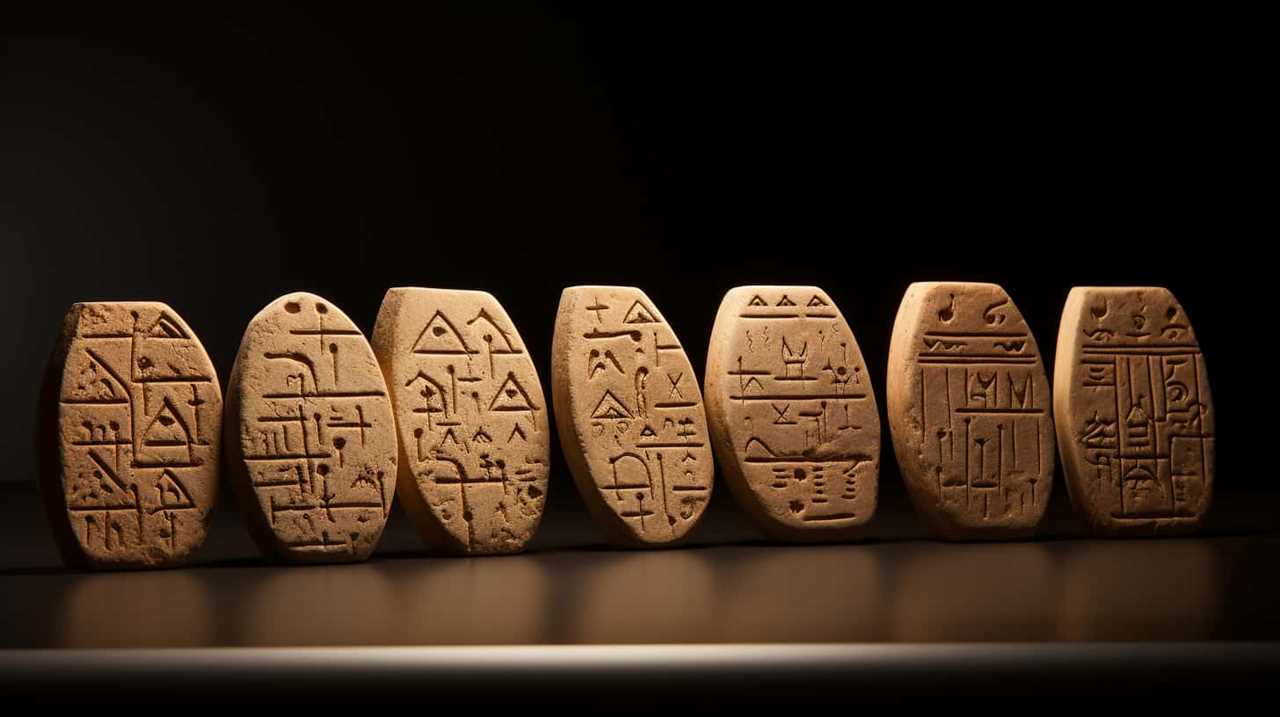
To emphasize the significance of these ancient proverbs, let’s take a moment to reflect on a few examples:
| Proverb | Translation | Meaning |
|---|---|---|
| "The journey of a thousand miles begins with a single step" | 万里之行,始于足下 | Every great achievement starts with a small, humble beginning. It reminds us to take the first step towards our goals, no matter how daunting they may seem. |
| "A crisis is an opportunity riding the dangerous wind" | 危机就是危险与机遇并存 | In every crisis, there is an opportunity for growth and transformation. It teaches us to look beyond the challenges we face and find the hidden potential within them. |
| "A book is like a garden carried in the pocket" | 书籍如同口袋中的花园 | Books hold a wealth of knowledge and inspiration. They have the power to transport us to different worlds and expand our horizons, even in the most confined spaces. |
These proverbs serve as a reminder that the wisdom of the past can still guide us today. By exploring the cultural wisdom embedded within these proverbs, we can uncover hidden insights that can deepen our understanding of ourselves and the world around us. They offer us a chance to reflect on our actions, our values, and our place in the universe, ultimately leading to personal growth and a greater sense of fulfillment.
Frequently Asked Questions
How Can Ancient Eastern Proverbs Be Applied to Modern Life?
Applying ancient wisdom to modern life provides us with invaluable guidance. These age-old proverbs offer timeless insights that help us navigate the complexities of our fast-paced world and cultivate a sense of balance and harmony.
What Is the Cultural Significance of Eastern Proverbs?
The cultural significance of eastern proverbs lies in their ability to provide cultural understanding and wisdom in simplicity. They offer timeless lessons that transcend time and resonate with us today.

How Do Ancient Eastern Proverbs Provide Insights Into Human Nature?
Ancient eastern proverbs offer profound insights into human nature, revealing universal truths that transcend time and culture. They provide us with ancient wisdom that still resonates today, guiding us towards a deeper understanding of ourselves and the world around us.
What Impact Do Ancient Eastern Proverbs Have on Society Today?
Ancient Eastern proverbs guide our decision-making and provide wisdom for personal growth. Their timeless wisdom influences society today, helping us navigate the complexities of life and empowering us to make informed choices.
How Can Ancient Eastern Proverbs Guide Us in Modern Living?
Ancient eastern proverbs offer us ancient wisdom that still holds timeless guidance for modern living. They provide valuable insights into navigating life, relationships, and personal growth, helping us achieve mastery and find fulfillment.
What Makes Ancient Eastern Proverbs Timeless and Relevant Today?
Ancient Eastern proverbs contain a profound wisdom in ancient proverbs that transcends time. Their timeless relevance lies in their universal truths and practical insights for navigating life’s challenges. Through the centuries, these proverbs have continued to offer invaluable guidance, making them a cherished source of wisdom for many.
Conclusion
In conclusion, ancient Eastern proverbs continue to resonate today like a gentle breeze that carries the wisdom of generations. These timeless sayings provide valuable lessons for modern life and offer guidance for navigating the complexities of contemporary society.

They hold hidden wisdom waiting to be uncovered, and their enduring impact reminds us of the power of ancient knowledge. Reflecting on these proverbs allows us to connect with the past, gain insights into the present, and find guidance for our journey towards a meaningful future.
Fritz is a writer whose humor and wit infuse life into words. His creativity, combined with a profound love for the English language, makes him a unique voice at afterQuotes. Fritz’s engagement with books, culture, and social media adds depth to his contributions, making them resonate with our diverse audience.

